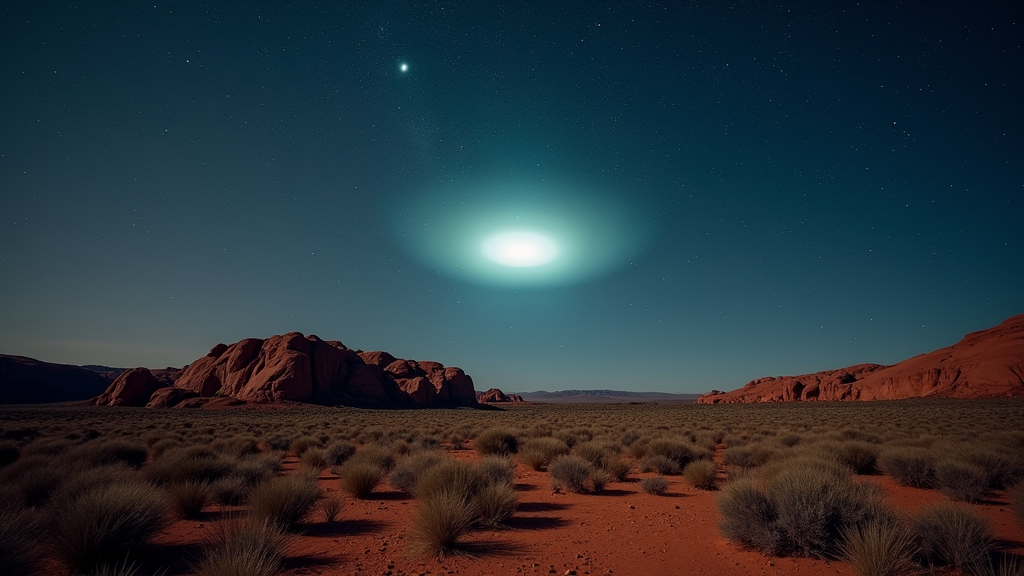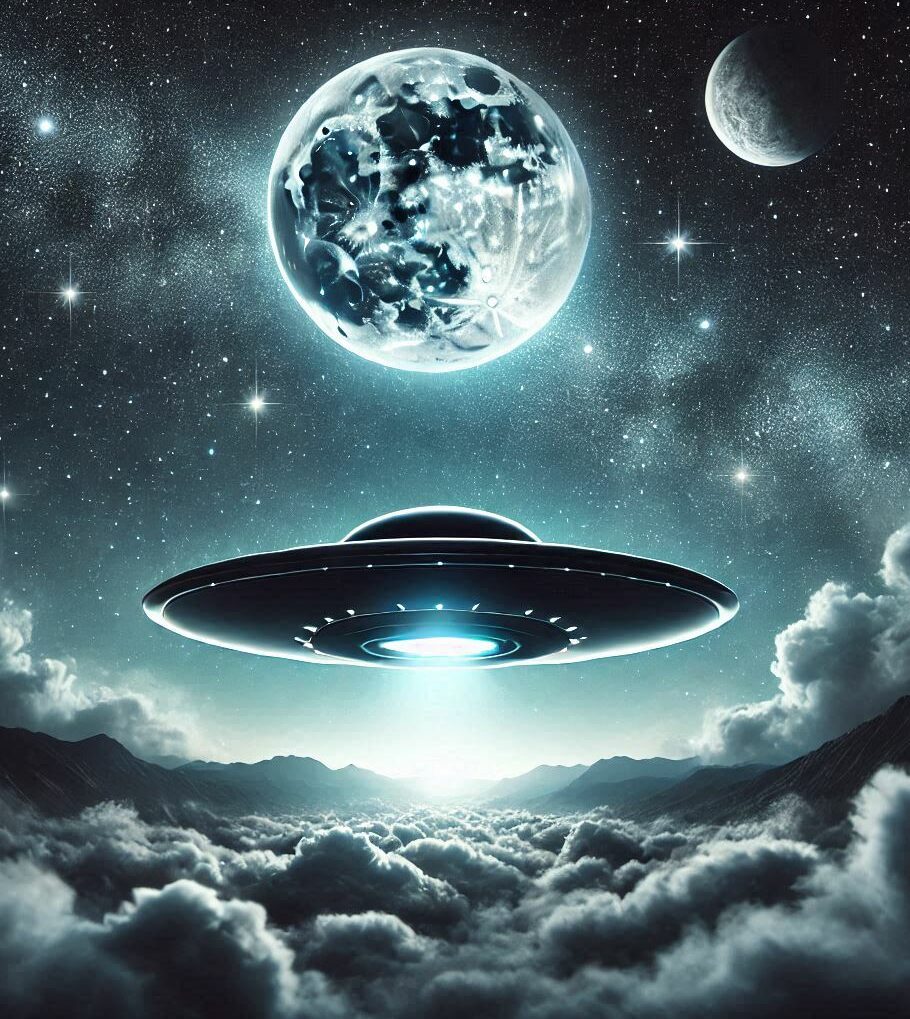UFO sightings in Australia have long captured the public’s imagination. The vast landscapes, clear skies, and remote regions provide a perfect backdrop for unexplained phenomena. I have always found these accounts fascinating because they invite questions about what might be out there. A mix of historical events, modern interpretations, and an overall mystery makes this topic especially intriguing.

UFO Sightings in Australia: A Brief Overview
Reports of mysterious objects in the sky have emerged in Australia for decades and continue to spark debate among enthusiasts and sceptics alike. Many of these sightings feature unidentified flying objects observed above remote deserts, over quiet coastal towns, or near isolated military zones. Each account adds a new layer to the narrative of unusual aerial phenomena. Whether these reports are misinterpreted natural occurrences or genuine encounters with unknown technology remains open for discussion.
For many Australians, the appeal of UFO stories goes beyond mere entertainment. It is about the thrill of the unknown and the possibility that not all questions about our world have been answered. Over the years, several incidents have gained media attention and even prompted official government probes, adding to the fascination with the subject.
Historical Background and Notable Incidents
The history of UFO sightings in Australia stretches back several decades. One of the earliest well-known cases occurred in the mid-20th century when reports of strange lights over the remote outback began attracting public attention. In later years, areas such as Westall in Melbourne and various spots in the Northern Territory became firmly associated with UFO lore.
Local Indigenous cultures had their interpretations of celestial events. Ancient stories sometimes described mysterious lights and objects as omens or spiritual signals. Modern sighting accounts have built on these traditional narratives, creating a tapestry of observation and anecdote that spans generations and continues to captivate people today.
Another notable facet of Australia’s UFO narrative is the proximity of many sightings to military installations. Several reports have been near defence facilities, prompting speculations about secret projects or experimental aircraft. Local news outlets and, at times, even government research panels have documented such incidents, adding further depth to the overall mystery.
Understanding UFO Sightings and Popular Theories
There are many theories regarding the causes of UFO sightings in Australia. Some suggest that these phenomena could be caused by advanced foreign technology or even evidence of extraterrestrial visitors. Others believe that natural atmospheric effects, such as unusual cloud formations or meteorological anomalies, might be mistaken for unidentified objects. The actual explanation remains elusive in many cases, leaving room for debate.
Scientists and researchers typically approach these reports with caution. Conventional explanations—from satellites and drones to weather-related occurrences—are often the first to be considered. Nonetheless, the discussion continues, with some experts calling for more detailed investigations to help clear up the ambiguity surrounding these sightings.
The cultural impact of UFO encounters is undeniable. While many cases are eventually explained through natural or man-made causes, a few baffle experts. These unresolved accounts have fueled widespread belief in the possibility of life beyond Earth and encouraged both casual observers and serious investigators to remain open-minded.
An Essential Guide for Investigating UFO Sightings
Investigating UFO sightings in Australia can be both challenging and rewarding. Over time, I have learned that cautious observation and systematic recording are key to ensuring that every account is given proper attention. There are several practical steps that anyone interested in looking into such phenomena should follow:
- Document the Sighting: Write down details such as the date, time, weather conditions, and direction in which the object was seen. Accurate notes can be vital later.
- Gather Evidence: If possible, record the event or take photographs that capture the subject. Ensuring that your device is set to function in low-light conditions can make a big difference.
- Share Your Experience: Report your sightings to local UFO investigation groups or trusted authorities. Sharing firsthand accounts can help build a more expansive database for future analysis.
- Check Weather and Air Traffic Records: Sometimes, simple atmospheric conditions or scheduled flights can explain what you observed. Verifying these details can help avoid misinterpretations.
- Keep an Open Mind: Although extraterrestrial visits are exciting, it is essential to consider every possible explanation, including man-made objects and natural events.
By following these steps, individuals contribute valuable information to the broader study of UFO phenomena, ensuring that each report is thoughtfully and methodically analyzed.
Common Challenges in Analyzing UFO Sightings
Examining UFO sightings is not without its difficulties. Even experienced researchers encounter challenges when trying to figure out the true nature of these events. Several factors can complicate investigations:
- Reliability of Witnesses: Human memory is not infallible. Stress or excitement during the event may cause witnesses to recall details inaccurately.
- Quality of Evidence: Many sightings occur at night or in remote regions, often resulting in low-resolution or shaky images and videos.
- Natural Explanations: Atmospheric phenomena can produce optical illusions. Events like ball lightning, meteor showers, or unusual cloud formations may be mistaken for UFOs.
- Variations in Reporting: Different observers may describe the same event in varying ways, influenced by personal perceptions and biases.
Investigators need to cross-check and verify all available information. Training in careful observation and proper documentation can help reduce discrepancies, ensuring a more accurate analysis of each sighting.
Witness Reliability
When reviewing reports, it is essential to remember that stress can alter a witness’s recollection. The shock of an unexpected event may lead observers to mix up details. Techniques to improve memory recall and careful note-taking can help mitigate these issues over time.
Quality of Evidence
The credibility of a sighting is often linked to the quality of the evidence provided. Low-light conditions, shaky footage, and blurred images are common challenges. Experts frequently struggle to make sense of incomplete or unclear recordings without additional data to support their interpretations.
Natural Phenomena
Many reported UFO sightings are affected by environmental conditions such as rare atmospheric events or unusual cloud formations. Identifying these natural occurrences is key to distinguishing genuine mysteries from misinterpreted phenomena.
Reporting Discrepancies
Personal biases and interpretations can alter the narrative when multiple witnesses are present. Researchers must check and compare individual accounts against environmental and technical data to build the most accurate picture.
Throughout the investigative process, clarity and objectivity must be maintained. Detailed records and follow-up inquiries are essential for reducing initial confusion and arriving at a reliable conclusion.
Advanced Investigative Techniques
For those with experience studying UFO sightings, several advanced methods can be applied to understand these incidents better. These techniques are designed to sift through ambiguous reports and extract credible conclusions.
Photographic Analysis: High-resolution cameras and infrared technology can capture details that casual recordings might miss. Modern software can step up image stabilization and clarity, making examining ambiguous shapes and movements in the sky easier. Analyzing footage frame by frame may reveal details the naked eye could easily overlook.
Scientific Instruments: Weather stations, radar data, and satellite imagery are increasingly being used by researchers to correlate sightings with natural events. When a recorded UFO incident coincides with unusual meteorological data, it opens the door for a deeper and more informed analysis.
Collaboration with Experts: Teaming up with atmospheric scientists, astronomers, and engineers can provide valuable insights. A multidisciplinary approach is often necessary to distinguish genuine sightings from more mundane phenomena that can be explained. Bringing together specialists from different fields helps generate well-rounded and reliable conclusions.
These advanced techniques increase the investigation process and expand our understanding of what might be behind these intriguing lights. They remind us how technology has evolved to help us analyze the unknown more efficiently.
Resources for UFO Sightings in Australia
Anyone interested in UFO sightings can benefit from knowing about available resources. Organized databases, local investigative groups, and government records that offer detailed accounts of sightings can benefit researchers and enthusiasts.
Several dedicated organizations focus on gathering and analyzing UFO reports. These groups, including amateur investigators and professionals, work together to document events. Many run online forums and maintain archives detailing historical sightings while offering updates on recent cases.
- Local Research Groups: Community-led organizations frequently hold meetings and share firsthand experiences. These groups offer platforms to exchange ideas and reconcile differing accounts.
- Government Archives: Some government agencies have released files on past UFO investigations. These documents offer a glimpse into official methods and provide background to historical incidents.
- Scientific Publications: Research articles on atmospheric events and optical phenomena can help explain many sightings. Academic journals often adopt a rigorous approach to polish our understanding of cases that initially seem mysterious.
When used together, these resources help piece together the broader picture of UFO sightings in Australia. They also serve as an excellent starting point for anyone checking further details about the subject.
Frequently Asked Questions
Question: What is one of the most famous UFO sightings in Australia?
Answer: One well-known case is the Westall incident near Melbourne, in which multiple witnesses reported a mysterious object hovering over a school. Researchers have revisited this event over the years, and it remains a key part of Australia’s UFO lore.
Question: How can I be sure that what I saw was a UFO?
Answer: Confirming an unidentified object can be challenging without extra evidence. It is very important to document the event carefully, verify details using weather and air traffic records, and compare your observations with known phenomena.
Question: Are there official groups investigating UFO sightings in Australia?
Answer: Several local organizations and archival projects are dedicated to studying and recording UFO sightings. In the past, some government agencies have also taken an active role in such investigations.
Question: What kind of equipment is recommended if I want to record a UFO sighting?
Answer: A good-quality camera that performs well in low-light conditions is recommended. A digital recorder and a stable tripod can also help capture more explicit evidence.
Wrapping Up
The phenomenon of UFO sightings in Australia provides a compelling glimpse into the unknown. The mix of historical accounts, modern investigations, and advanced technological techniques makes this subject fascinating and complex. Whether you are a casual observer or a serious researcher, understanding the various aspects of these sightings can lead to more informed discussions and thoughtful investigations.
The mysteries in the skies continue to challenge our conventional ideas about the natural world. By responsibly documenting events, verifying details, and employing advanced analysis methods, we can work toward a more precise explanation of these unidentified occurrences. The adventure of uncovering what lies beyond our familiar explanations is both exciting and humbling. Keep an open mind, carefully evaluate each sighting, and contribute your observations to help build a body of knowledge that spurs ongoing discussion and research. This sustained curiosity is essential because it broadens our understanding of the world and reminds us that there is still much to explore.
